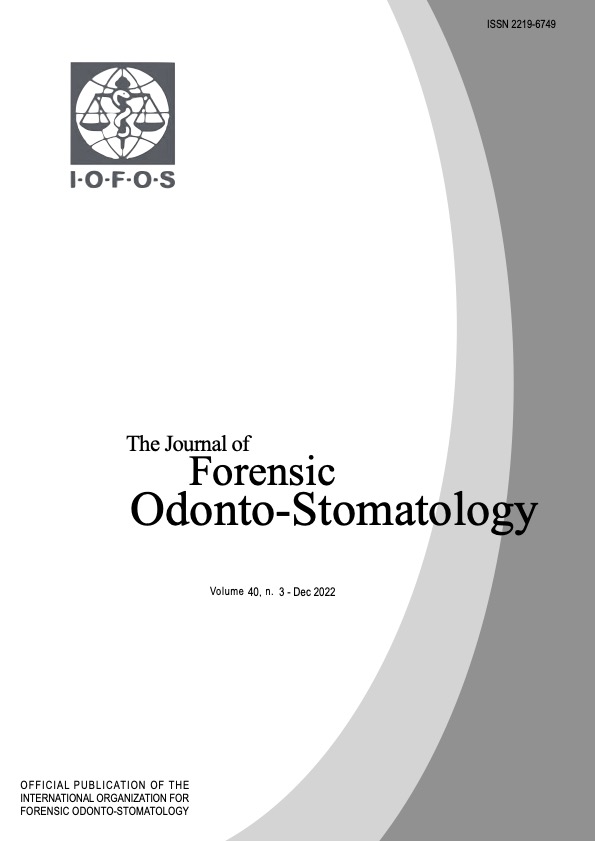Testing the maturation and the radiographic visibility of the root pulp of mandibular third molars for predicting 21 years. A digital panoramic radiographic study in emerging adults of south Indian origin
Keywords:
Forensic Odontology, Dental age estimation, 21 years, Third molar maturity index, Radiographic visibility of the root pulpAbstract
Discriminating subjects especially children and young adults according to the age group of medicolegal interest is a common task in medicolegal practice. In many countries, 21 years has got medicolegal importance. In the present study, we assessed and compared the accuracy of third molar maturity index (I3M) and the stages of radiographic visibility of the root pulp (RPV) in the prediction of the age threshold 21 years. A sample of 910 digital panoramic radiographs (455 males and 455 females) of adolescents and young adults aged between 16 and 30 years and of south Indian origin were evaluated. The performance of different I3M cut- off values and RPV stages was examined. The results showed that the cut- off value I3M< 0.02, has resulted in better discrimination with accuracy of 76.92% and 80.44%; specificity of 48.28% and 56.16% in males and females; sensitivity of 100% and posttest probability of 65.9% in both sexes. On the other hand, RPV stage 2 has resulted in the accuracy of 84.76% and 84.55%, sensitivity of 78.17% and 78.97% in males and females; specificity and posttest probability of 100% in both sexes. In conclusion, I3M method could not be used to discriminate subjects around 21 years, as it resulted in greater percentage of false positives. When RPV stage 2 was determined, it is possible to state that the subject has already attained the age of 21 years. Further studies are warranted to address the usefulness of these methods.

